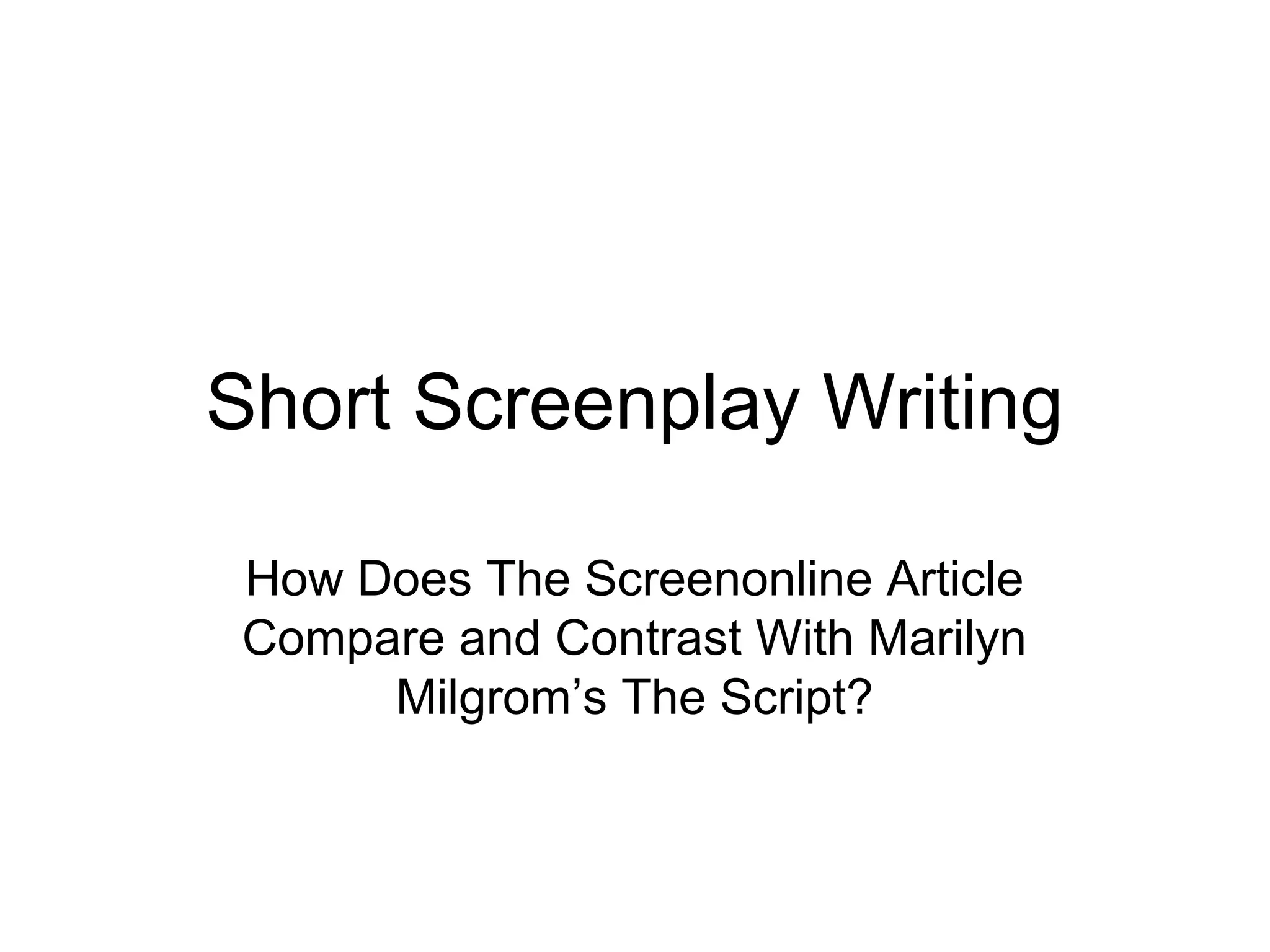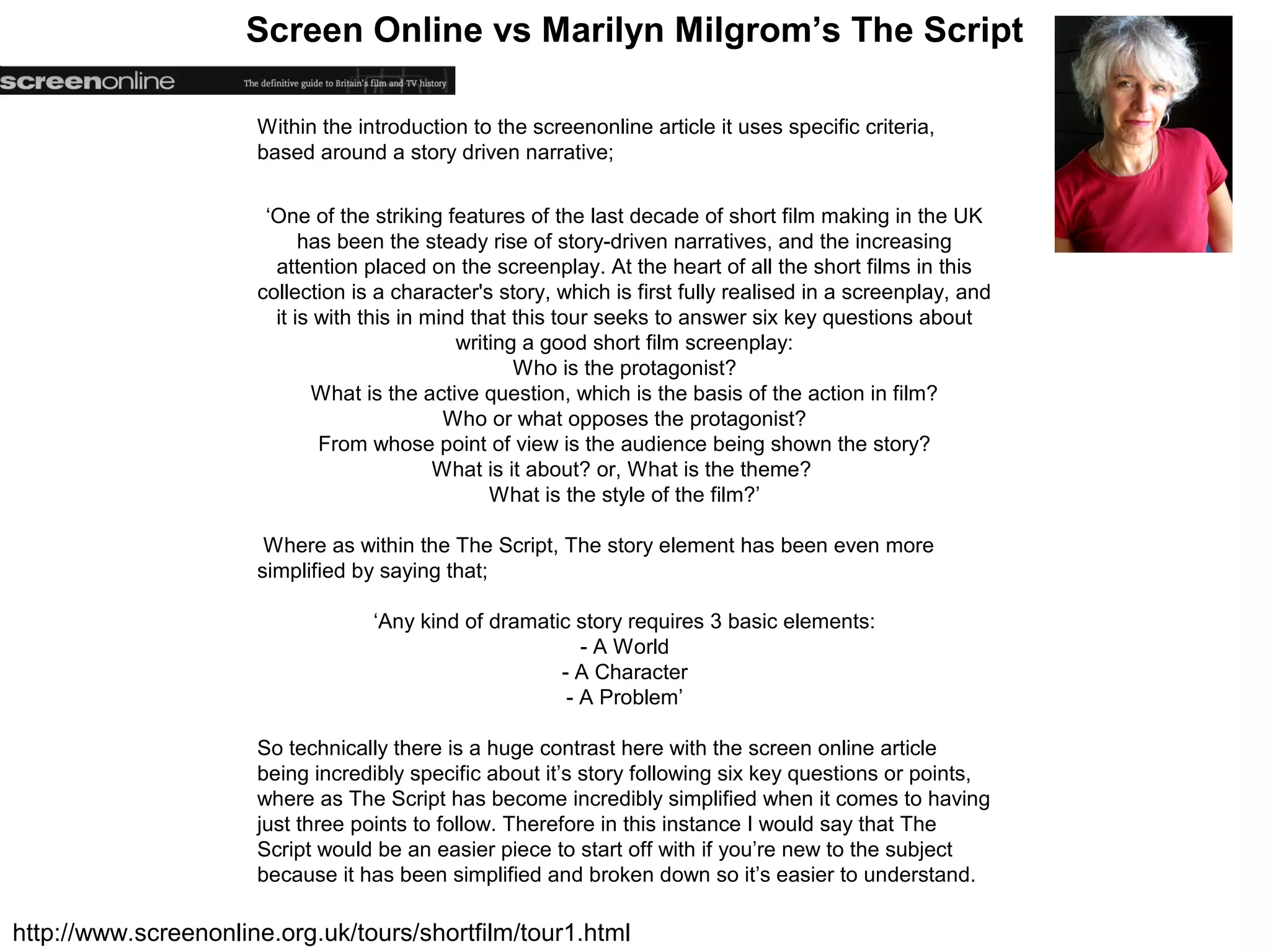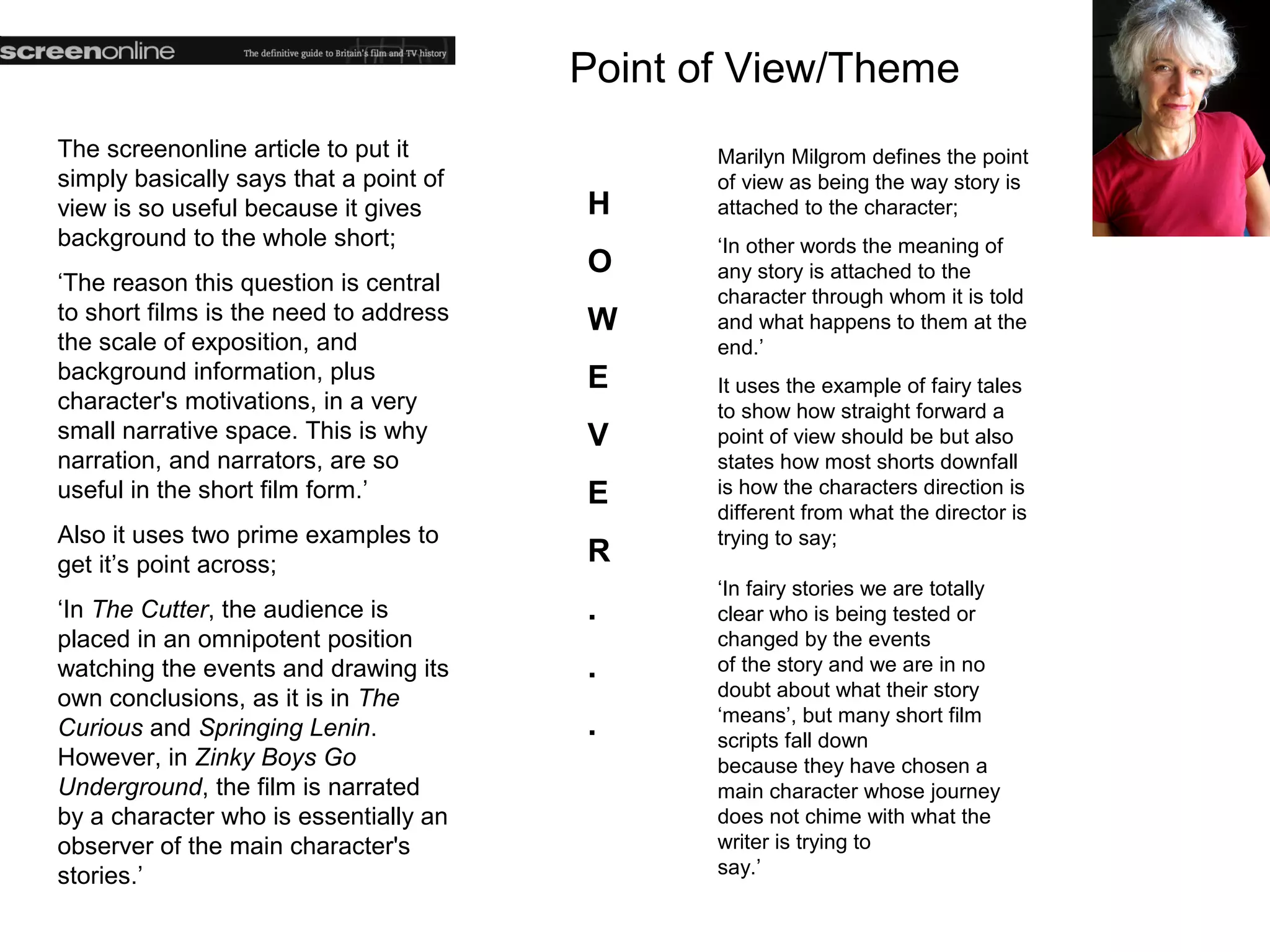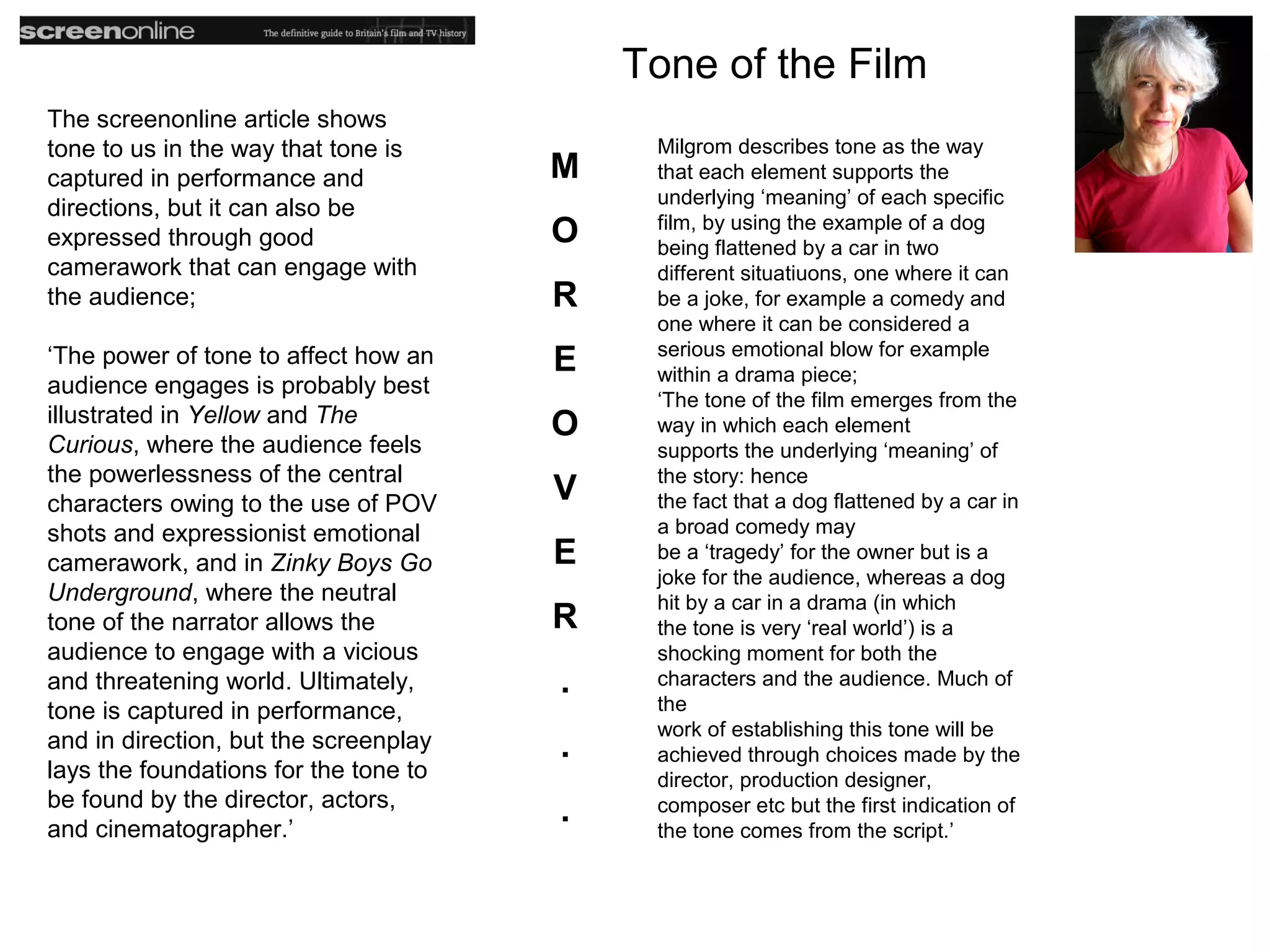The screenplay article provides more specific criteria for writing a short film screenplay, including six key questions about the protagonist, active question, opposing forces, point of view, theme, and style. Milgrom's book simplifies it to the basic three elements of a world, character, and problem. While the screenplay article goes into more depth on different aspects like character and tone, Milgrom's book breaks it down more simply as an introduction to screenwriting. Both discuss the importance of establishing the main character, their problem or goal, and how the tone emerges from supporting the underlying meaning of the story.




